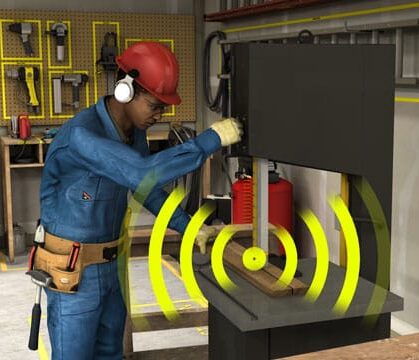March 4, 2024 6 min read

The Impact of Training on AEC Employee Retention
Industry:
Solution:

Employee retention is top of mind for every AEC company. With the influx of projects and funding from the Infrastructure Investment and Jobs Act (IIJA) to the increasing cost of labor, retention is a critical issue for most companies. At Vector Solutions, we believe in the transformative power of training people. In this blog, we’ll talk about the numerous ways that training can improve employee retention and improve your bottom line.
The State of Training in Architecture, Engineering, and Construction
AEC firms have a wide variety of training needs. Regardless of role, AEC professionals need the following types of ongoing training:
- Technical skills
- Soft skills
- Professional development
- Regulatory compliance (e.g., OSHA)
- Project management skills
Within each focus area—from architecture and design to engineering and the trades—there are numerous other training needs. These include certain regulations, license renewal requirements, and trends impacting that area of work.
But AEC companies are facing numerous challenges, from labor shortages to budget constraints and resistance to change, that make it difficult to keep all personnel trained and on the cutting-edge of the industry.
It’s up to learning and development and HR teams to make the case for workforce training to ensure their company doesn’t fall behind. In the rest of this blog, we’ll help you build your case.
Guide to the State of Architecture, Engineering & Construction Training
Unlock AEC success with our 2024 Training Guide — addressing skills, compliance, and future-proofing.
View Guide
The Link Between Training and Retention
Beyond the acquisition of new skills or knowledge, training programs cultivate a culture of engagement, growth, continuous improvement, and job satisfaction.
But how does better training lead to higher employee retention?
It’s rather simple: When employees perceive that their professional development is encouraged and prioritized, they are more likely to feel a stronger sense of loyalty and commitment to their employer.
Right now, only 26% of architects and engineers feel like they have growth opportunities at their current employer. We can do better! And just by focusing on giving them continuing education and learning paths, can make a huge impact on their engagement and desire to stay with their current company.
The connection between training and retention becomes even more nuanced when dissected across the diverse roles within the AEC sector.
- For architects, continuous training in the latest design software and sustainable practices not only sharpens their skills but instills a sense of relevance and adaptability.
- Engineers navigating the forefront of technological advancements find that ongoing training not only enhances their proficiency but also fosters a dynamic and fulfilling work environment.
- Construction professionals see the impact of training not just in skill acquisition but in the creation of a safety-conscious, highly efficient workforce.
So, AEC firms that invest in robust training programs show their employees they are committed to their long-term growth and success. This then establishes a reciprocal commitment from employees towards the firm. Here’s why that matters:
- The average hourly worker costs $1500 to replace
- Technical positions costs 100 – 150% of their salary to replace
But with great training, you can increase retention 30-50%. That adds up to a lot of savings.

Why AEC Retention Starts with Onboarding
Most companies start thinking about retention too late. The truth is: the path to retaining your staff starts at that first impression: their hiring and onboarding experience.
Onboarding is critical. Not only does it set the tone for how an employee feels about their role and the company, but it also is when they learn key skills that they’ll need for their job and to succeed at that specific organization.
When onboarding is poor, employees feel more stressed, aimless, and committed to the organization. And that makes sense, right? If a company doesn’t put time and effort into welcoming and training new hires, that sends a powerful message, doesn’t it?
So, the first days and weeks at a job completely shapes the perceptions, expectations, and, crucially, the sense of belonging.
But when you get onboarding right, you unlock a world of benefits:
- Purpose and alignment. Employees who undergo thorough onboarding not only familiarize themselves with the operational aspects of their role but also gain insights into the company’s values, culture, and overarching mission. This early immersion creates a connection between the individual and the firm, fostering a sense of purpose and alignment.
- Engagement and connection. Effective onboarding includes exposure to project methodologies, safety protocols, and collaborative tools. In an industry where seamless teamwork is integral to success, onboarding becomes the catalyst for building cohesive, high-performing teams.
- Alignment and acclimation. Retention in AEC is often a reflection of how well an employee’s initial experiences align with their expectations and professional aspirations. A well-crafted onboarding program addresses this alignment head-on, ensuring that employees not only understand their role but feel supported and valued from the outset.
Employee Onboarding Guide for AEC Companies
Guide to structured and scalable onboarding programs to get your AEC workforce up to speed faster and increase long-term employee retention.
View Guide
How to Start Your AEC Workforce Training Program
Ready to revamp your training program to unlock higher retention and levels of loyalty and employee engagement? Follow these steps to kickstart your training program:
1. Assess Skill Gaps and Industry Trends
Begin by conducting a comprehensive assessment of your workforce’s current skills and identifying potential gaps. And, simultaneously, watch for emerging trends, technologies, and industry best practices. This dual-focused approach ensures that your training program addresses immediate needs while preparing your team for the future landscape of AEC.
2. Design Tailored Training Modules
Craft training modules that are tailored to the specific roles within your AEC firm. Recognize the unique demands of architects, engineers, and construction professionals, and ensure that training content aligns with their respective responsibilities and growth trajectories.
3. Implement Comprehensive Onboarding
Elevate your onboarding process from a mere formality to a strategic driver of retention. Extend beyond administrative tasks and immerse new hires in the core values, safety protocols, and collaborative dynamics of your firm. Consider mentorship programs and interactive sessions that facilitate swift integration and instill a sense of belonging.
4. Leverage Technology for Continuous Learning
Embrace technology as an enabler for continuous learning. Invest in Learning Management Systems (LMS) that streamline training administration, tracking, and reporting. This not only enhances the efficiency of your training initiatives but also empowers employees to engage in self-paced learning, staying abreast of industry updates at their convenience.
5. Foster a Culture of Learning and Recognition
Cultivate a culture where learning is celebrated and recognized. Establish avenues for employees to showcase their newly acquired skills, whether through project contributions, innovative solutions, or knowledge-sharing sessions. Recognition reinforces the value placed on continuous improvement and creates an environment where employees feel motivated to invest in their professional development.








